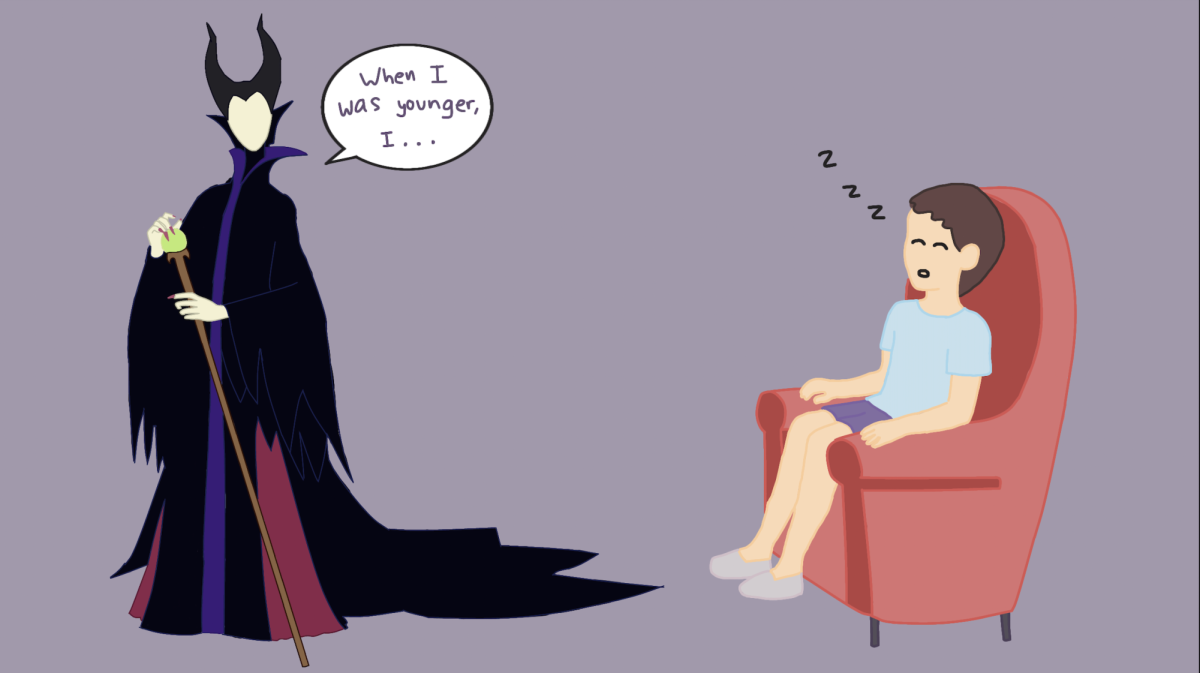So you’ve devised a villain character, but you don’t know what propels them. What do you do then? Most authors tend to take the tragic backstory approach, but a tragic backstory is not a necessary gateway to writing a compelling antagonist.
Let’s take Disney’s “Maleficent” as an example. In the 1959 animated version of “Sleeping Beauty,” Maleficent was depicted as an inherently evil person by nature, given that she placed a deadly curse on the protagonist, Aurora, when she was an infant simply because Maleficent had not been invited to her party.
Disney then took a sudden turn with the release of the live-action “Maleficent” in 2014, in which Maleficent was portrayed as a naturally good character until Aurora’s father, King Stefan, left her heartbroken by cutting her wings. In the live action version, not only does Maleficent watch over Aurora while she is being raised by the fairies, but she also kisses her at the end of the movie to revive her, indicating that Maleficent truly cared for Aurora.
Disney’s efforts to make the villain seem tragically misunderstood takes away from the idea that Maleficent was truly an evil person who ruined Aurora’s life out of spite.
Humanizing an evil character detracts from the terrible things they have done. While having a tragic backstory can bring more weight to a character and their beliefs, it diverts an audience’s attention from the character’s wrongdoings, allowing for their actions to be “understandable” and even “excusable” in the context of their past.
“I don’t think a bad guy needs a sad childhood or past,” sophomore and fiction lover Anyu Zhang said. “Often, what makes a villain alluring is the charm of the character. It’s the diversity and complexity of the characters themselves that are often the most attractive.”
Much of the emphasis on creating villains’ tragic backstories rests on the misguided belief that evil characters are too one-note without them. However, relying on morally ambiguous characters to spruce up middling stories does not guarantee success, as seen in the recent movie adaptation of “The Hunger Games” prequel “The Ballad of Songbirds and Snakes.”
Cornelius Snow, the film’s protagonist and later antagonist of “The Hunger Games,” does little to elevate the plot with his — you guessed it — tragic backstory. Its paltry attempts at explaining Snow’s descent into depravity do not hold up when one considers the fact that his initial good qualities and care for his struggling family seem exaggerated at best and his evilness is a byproduct of having awful luck in the romance department, according to Time.
At the other end of the spectrum, Star Wars’ Darth Sidious is a prime example of a villain whose immorality is far from impeded by the absence of a heart-wrenching backstory. Instead of confining him to the role of a sympathetic character doomed by the narrative, writers chose to portray Darth Sidious’s galactic domination as the culmination of decades of evil scheming and purely selfish intentions.
Of course, it is also important to note that backstories can create depth in a character.
“Adding to the integrity of the story, a good backstory can illustrate the context of the time period through the characters,” sophomore and fiction lover Tina Yang said.
While it is true that there is more to a villain’s story once information about their past is added, melodramatic sob stories have been done to death. It can be plausible for a villain to commit the crimes they have based on the circumstances they face, but this does not make it necessary to invent excessive details to evoke sympathy for characters who choose the path of evil simply because they were wronged in the past.
Though authors may be tempted to take the easy route by throwing tragic backstories into the mix, truly well-written villains do not need tragic backstories to shine.






